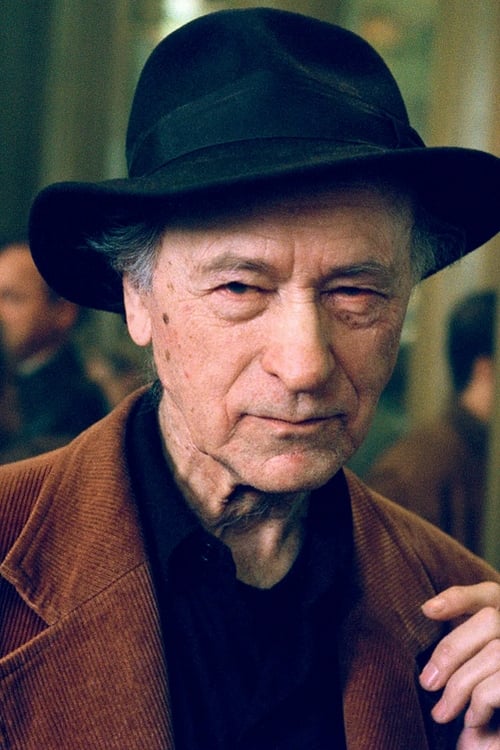
Self (archive footage)
The quixotic journey of Nam June Paik, one of the most famous Asian artists of the 20th century, who revolutionized the use of technology as an artistic canvas and prophesied both the fascist tendencies and intercultural understanding that would arise from the interconnected metaverse of today's world.

This very special film features a carefully curated selection of some of the priceless messages that have graced Anthology’s voicemail system over the years. From the historically important to the utterly (and sublimely) absurd, they feature a cast of characters ranging from legendary avant-garde filmmakers, scholars, and other cultural figures to civilians whose legend has (until now) been confined to the offices of Anthology, thanks precisely to their witty, eloquent, eccentric – or in some cases unforgettably psychotic – voicemails. We’ve toyed with the idea of sharing these messages in some form for years, and the “Imageless Films” series provides a perfect pretext.

Jonas Mekas
A portrait movie of the Godfather of American avantgarde cinema. Through material filmed primarily in the 1990s by both the directors and Jonas Mekas himself, a new insight appears on the filmmaking Lithuanian New Yorker who doesn't consider himself someone who makes films but a filmer.
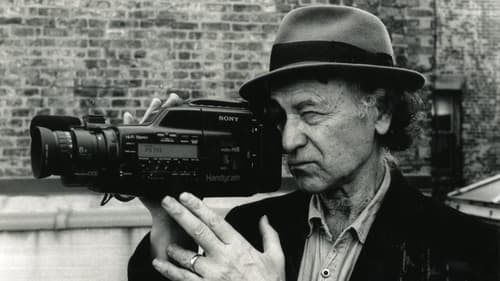
Self (archive footage)
For over 70 years, Jonas Mekas, internationally known as the "godfather" of avant-garde cinema, documented his life in what came to be known as his diary films. From his arrival in New York City as a displaced person in 1949 to his death in 2019, he chronicled the trauma and loss of exile while pioneering institutions to support the growth of independent film in the United States. Fragments of Paradise is an intimate look at his life and work constructed from thousands of hours of his own video and film diaries-including never-before-seen tapes and unpublished audio recordings. It is a story about finding beauty amidst profound loss, and a man who tried to make sense of it all... with a camera.
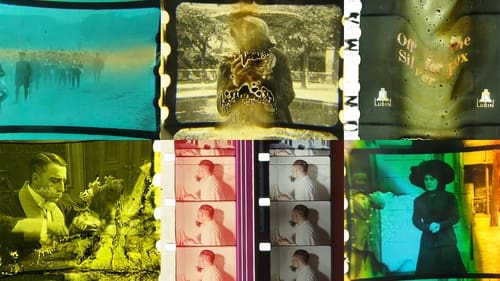
Self
Why are we still able, today, to view images that were captured over 125 years ago? As we enter the digital age, audiovisual heritage seems to be a sure and obvious fact. However, much of cinema and our filmed history has been lost forever. Archivists, technicians and filmmakers from different parts of the world explain what audiovisual preservation is and why it is necessary. The documentary is a tribute to all these professionals and their important work.

Gozo Yoshimasu, a pioneer of Japanese contemporary poetry, pursued the vision of his ally, the late Jonas Mekas in Manhattan and Brooklyn. The time is the end of January 2020, just before the coronavirus strikes NYC, and the trip is just in time. This film depicts the dramatic birth of a poem that could be called a requiem on the first anniversary of the death of Mekas, who was considered a giant of experimental cinema

Self
Experience the iconic rock band's legacy in the first major documentary to tell their story. Directed with the era’s avant-garde spirit by Todd Haynes, this kaleidoscopic oral history combines exclusive interviews with dazzling archival footage.

Cinematography

The tapes in the program consist of some of Mekas’ earliest cassettes from the 1990s not long after he first began working with video as well as more recent mini-DV tapes from 2010s. The contents of the tapes have not been previously seen in their entirety. The footage provides rare insight into aspects of Mekas’ video-making practice, as well as his activities, thoughts, dreams, and concerns, especially during the later years of his life.

Director
The tapes in the program consist of some of Mekas’ earliest cassettes from the 1990s not long after he first began working with video as well as more recent mini-DV tapes from 2010s. The contents of the tapes have not been previously seen in their entirety. The footage provides rare insight into aspects of Mekas’ video-making practice, as well as his activities, thoughts, dreams, and concerns, especially during the later years of his life.

Himself
The story of Tiny Tim’s improbable rise to stardom is the ultimate fairytale - and so is that of his downfall. For a brief time, the shy and truly unusual outsider artist was the biggest star in the world.

"My last image of Jonas."—Ken Jacobs

Director
A meditative tribute to Verdi’s masterpiece and an homage to beloved filmmaker Jonas Mekas.

Writer
Self Discovery for Social Survival is a collaborative surf and music film produced by Brooklyn based record label, Mexican Summer and Pilgrim Surf + Supply, a New York based surf and outdoor brand. Filmed in Mexico, the Maldives and Iceland in three separate vignettes, musicians (Allah Las, Connan Mockasin, Andrew Van Wyngarden of MGMT, and Peaking Lights) alongside pro-surfers,embark on a journey that combines a symbiotic relationship between music and the waves, the environment, and local culture. Poetically narrated by the legendary avant-garde film maker Jonas Mekas.

Narrator (voice)
Self Discovery for Social Survival is a collaborative surf and music film produced by Brooklyn based record label, Mexican Summer and Pilgrim Surf + Supply, a New York based surf and outdoor brand. Filmed in Mexico, the Maldives and Iceland in three separate vignettes, musicians (Allah Las, Connan Mockasin, Andrew Van Wyngarden of MGMT, and Peaking Lights) alongside pro-surfers,embark on a journey that combines a symbiotic relationship between music and the waves, the environment, and local culture. Poetically narrated by the legendary avant-garde film maker Jonas Mekas.
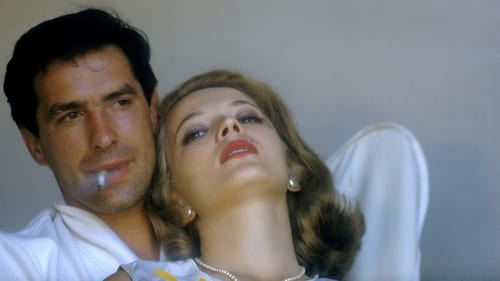
Self
An intimate portrait of the superb actress Gena Rowlands, icon of independent cinema. Together with her husband, legendary director John Cassavetes (1929-89), she lived an unusual life beyond the dream factory, a life in which reality and fiction were so perfectly intertwined that it made possible films that still today seem incredibly real.

Jem Cohen's memory-tribute to Jonas Mekas displaces its first-person narration from voice-over to on-screen text. Diaristic New York street imagery from 2015 mingles with the red roses of Lithuania and a 'makeshift memorial' to this beloved figure of the avant-garde.

Self
"Last Interview Film of Jonas Mekas / Version 1": this is the last filmed interview of Jonas Mekas. This is a last gift from Jonas to us.

A film tribute to the inspirational Jonas Mekas.

A short portrait of Jonas Mekas by filmmaker and veteran Jonas chronicler Peter Sempel.

Short portrait of Jonas Mekas by filmmaker and veteran Jonas chronicler, Peter Sempel.

Created by Anthology’s Archivist John Klacsmann, the visual track of Elegy for J.M. is the result of an encoding malfunction while preparing a clip of Jonas Mekas’s Lost Lost Lost (1976), a happy digital accident in keeping with the spontaneity and openness to chance embodied by Jonas’s diary films themselves.

Self
Filmmaker Alyssa Bolsey stumbles on a treasure trove of vintage cameras, old film reels, fading photos, technical drawings and boxes of documents that belonged to her great-grandfather Jacques Bolsey. Among the many boxes, she spots an old movie camera with the word "Bolex" embossed on its side and a dangling tag with the date, "1927." Entranced, she embarks on a journey to reveal how Jacques aimed to disrupt the early film industry with a motion picture camera for the masses.

The 29-minute experimental film Christmas on Earth caused a sensation when it first screened in New York City in 1964. Its orgy scenes, double projections and overlapping images shattered artistic conventions and announced a powerful new voice in the city's underground film scene. All the more remarkable, that vision belonged to a teenager, 18-year-old Barbara Rubin. A Zelig of the '60s, she introduced Andy Warhol to the Velvet Underground, Bob Dylan to Kabbalah and bewitched Allen Ginsberg. The same unbridled creativity that inspired her to make films when women simply didn't, saw her breach yet another male domain, Orthodox Judaism, before her mysterious death at 35. Lifelong friend Jonas Mekas saved all her letters, creating a rich archive that filmmaker Chuck Smith carefully sculpts into this fascinating portrait of a nearly forgotten artist. An avante-garde maverick, a rebel in a man's world, Barbara Rubin regains her rightful place in film history.

Self
In 1961 Lithuanian American artist and impresario George Maciunas established the avant-garde art movement Fluxus. George details the rise of Fluxus following a sensationalized tour of “concerts” in Europe in 1962, and continuing in New York for most of the 1960s and ’70s. During this time Maciunas was converting the dying industrial buildings of Soho into a network of artists’ lofts, creating one of the first official real estate co-ops of artist-owned buildings. Maciunas’s life and legacy—as recounted by artists of his generation, including Yoko Ono and Jonas Mekas—ignited debates that remain pivotal to artists working today.

A short film by Maria Lassnig, shot in 1970.

Director
Video diary film by Jonas Mekas, premiered at the British Film Institute on December 5, 2017.

Self
In his latest film, Mekas shares what he describes as “a valentine to Yoko Ono,” done in his signature diaristic style. Mixing the familiar 16mm film with DV video, he offers a fly-on-the-wall look at intimate moments spent with one of the foremost artists of that era, including performances by Ono and new footage of her recent work—a testament to her endurance and the friendships she has made and kept over the years.

Director
In his latest film, Mekas shares what he describes as “a valentine to Yoko Ono,” done in his signature diaristic style. Mixing the familiar 16mm film with DV video, he offers a fly-on-the-wall look at intimate moments spent with one of the foremost artists of that era, including performances by Ono and new footage of her recent work—a testament to her endurance and the friendships she has made and kept over the years.

Director
Scenes from the life and work of independent film-makers. Includes Douglas Gordon, Peter Hutton, Ken Jacobs, Alexander Kluge, Harmony Korine, Peter Kubelka, MM Serra, Susan Sontag, Béla Tarr, Agnes Varda, and more.

Himself
I Had Nowhere To Go is based on Jonas Mekas’s diary. It’s been over 70 years since he left his village in Lithuania to escape Nazi persecution. He was 22 years old. Today he is one of the last surviving members of a displaced generation and one of the greatest documenters of the human experience.

Self
A “Cinéma, de notre temps” series episode directed by french filmmaker Jackie Raynal, originally aired 29 May 2016.

Director
Yoko Ono Lennon's Courage Awards 2016

Self
Stephen Smith sets out to discover the real Andy Warhol - in the hour-by-hour detail of his daily life.

Opening of the Internet Saga Pavilion. At Palazzo Foscari Contarini, Venice. May 6 and 7, 2015.

Director
Opening of the Internet Saga Pavilion. At Palazzo Foscari Contarini, Venice. May 6 and 7, 2015.

Director
Portrait of the architect Raimund Abraham.

Cinematography
Jonas Mekas shows us the five Bolex cameras that he used to make all his films, 1950-2000. They also helped other filmmakers (Jack Smith, Gregory Markopoulos, Naomi Levine...). "I'm on my fifth Bolex now. They survive for one decade, then the springs retire".

Director
Jonas Mekas shows us the five Bolex cameras that he used to make all his films, 1950-2000. They also helped other filmmakers (Jack Smith, Gregory Markopoulos, Naomi Levine...). "I'm on my fifth Bolex now. They survive for one decade, then the springs retire".

"I developed a need to try to retain everything I was passing through, by means of my Bolex camera."

Camera Operator
"I developed a need to try to retain everything I was passing through, by means of my Bolex camera."

Director
"I developed a need to try to retain everything I was passing through, by means of my Bolex camera."

Director
Jonas Mekas talks about December 24th, his birthday.

Jonas Mekas talks about December 24th, his birthday.
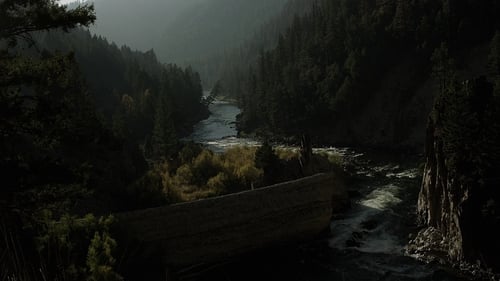
Wake Guest
Visionary artist Matthew Barney returns to cinema with this 3-part epic, a radical reinvention of Norman Mailer’s novel Ancient Evenings. In collaboration with composer Jonathan Bepler, Barney combines traditional modes of narrative cinema with filmed elements of performance, sculpture, and opera, reconstructing Mailer’s hypersexual story of Egyptian gods and the seven stages of reincarnation, alongside the rise and fall of the American car industry.

Director
Jonas Mekas films the Halloween festivities at Anthology Film Archives in 1990.

Himself
This distinctly personal journey into the artistic possibilities of independent film is not to be missed. Jonas Mekas, Jean-Pierre Gorin, Robert Kramer and many other visionaries and mavericks of the silver screen – as well as a book seller, a critic and a psychoanalyst – discuss what cinema has meant to them, what it is and what it could be and, implicitly, how it has changed over the 18 years in which this film was shot. Director Boris Lehman leads the charge, drawing in moments of absurdist humour and inventive camera work; he keeps things raw and spontaneous. His encounters with the now much-missed Jean Rouch and Stephen Dwoskin are particularly touching and stand testament to their personal playfulness and candour. An engaging, absorbing, epic odyssey of a movie.
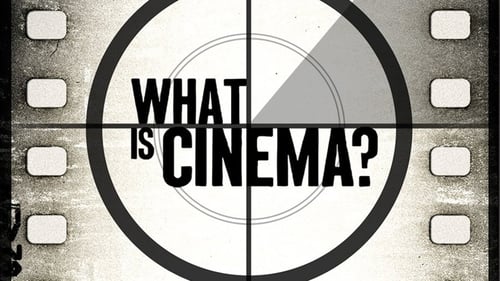
Self
Using the words and ideas of great filmmakers, from archival interviews with Alfred Hitchcock and Robert Bresson to new interviews with Mike Leigh, David Lynch, and Jonas Mekas, Oscar-winning filmmaker Chuck Workman shows what these filmmakers and others do that can't be expressed in words - but only in cinema.

Director
In the Kontti gallery, Kiasma presents a selection of Jonas Mekas’ films from the 1970s through to the 1990s. Born in Lithuania, Mekas fled from his native land in 1944 and finally settled in the United States. His circle of friends included writers, musicians and artists, such as Andy Warhol, Nico, Allen Ginsberg, Yoko Ono, John Lennon and Salvador Dalí, all of whom can also glimpsed in his films.

Jonas Mekas
"A motion picture composed of brief diaristic scenes not used in completed films from the years 1960-2000; and self-referential video footage taped during the editing. Brief glimpses of family, friends, girl-friends, the City, seasons of the year, travels. Occasionally I talk, reminisce, or play music I taped during those earlier years, plus more recent piano improvisations by Auguste Varkalis. It's a kind of autobiographical, diaristic poem, celebration of happiness and life. I consider myself a happy man." - Jonas Mekas

Director
"A motion picture composed of brief diaristic scenes not used in completed films from the years 1960-2000; and self-referential video footage taped during the editing. Brief glimpses of family, friends, girl-friends, the City, seasons of the year, travels. Occasionally I talk, reminisce, or play music I taped during those earlier years, plus more recent piano improvisations by Auguste Varkalis. It's a kind of autobiographical, diaristic poem, celebration of happiness and life. I consider myself a happy man." - Jonas Mekas

Director
Shortfilm in which Mekas follows a band on a boat ride on Easter Day.

Himself
This documentary interweaves celluloid and voice recordings by Maya Deren, and colleagues who knew her firsthand: Jean Rouch, Jonas Mekas, Alexander Hammid, Cecile Starr etc. Maya Deren (1917-1961) was an experimental filmmaker. In the 1940s and 1950s she made several influential avant-garde films, such as Meshes of the Afternoon (1943). Images from this and her other work are used in this documentary. You can also hear her voice, as well as accounts by contemporaries such as Jean Rouch and Jonas Mekas.

Himself
A narrative presented non-chronologically of Jonas Mekas's time in German forced labour camps and displaced person camps from 1944 to 1949, in which he quotes his diaries, as well as the German wartime writer Wolfgang Borchert.

Director
A narrative presented non-chronologically of Jonas Mekas's time in German forced labour camps and displaced person camps from 1944 to 1949, in which he quotes his diaries, as well as the German wartime writer Wolfgang Borchert.

Director
For some time I had been thinking about doing something with my Paris footage, of which I have many many hours. So [curator Danièle Hibon’s] suggestion [to make a new work celebrating 20 years of cinema at the Jeu de Paume museum] came just in time. I spent some three months going through my Paris footage and I managed to reduce it to the length you will be seeing, two hours and 39 minutes. It was very very hard to do so. I have so many friends in Paris, so many memories – and it’s all on video. So this is my love letter to Paris. To its streets, to the river Seine, to its cafes, bistros, bars, to the jambon de Paris, and, especially, to all of you, my Paris friends!

Director
I am in Provence near Mt. Ventoux. I remember the poet Petrarca walking on Mt. Ventoux and carrying with him a volume of St. Augustine’s CONFESSIONS, transcribed by hand, and reading it… on Mt. Ventoux… It’s my meditation in honor of Petrarca.

Director
Director Jonas Mekas travels through New York nights, through apartments, studios, backstage rooms, galleries, bars, and clubs. Encountering old acquaintances like Ken and Flo Jacobs, Yoko Ono, friends, brothers and sisters, sons and daughters. Mr. Mekas begins the film with the words 'I can't sleep.' Who hasn't been in this situation? Sleepy and yet wide awake at the same time, you find yourself in the world of those exhausted from the day's exertions, the drunk, the relaxed, the dancing, the brooding, the mourning, and the pensive.

Himself (voice) (segment "Mt. Ventoux")
In memory of the Japanese earthquake on 3.11, each director presents a 3 minute and 11 second short film in tribute to those who were lost that day.

Director
In memory of the Japanese earthquake on 3.11, each director presents a 3 minute and 11 second short film in tribute to those who were lost that day.

Director
For some twenty years Mars Bar, on the corner of First Street and
Second Avenue, Manhattan, has been my bar. That's where we went for
beer and tequila whenever we had to take a break from our work at
Anthology Film Archives, and it was also a bar where most of those who
came to see movies at Anthology ended up after the shows. We always
had a great time at Mars Bar. It was always open, there was always the
juke box, and very often there was no electricity, and it was old and
messy and it didn't want to be any other way — it was the last escape
place left downtown New York. So this is my love letter to it, to my
Mars Bar. Mars Bar as I knew it.

himself
For some twenty years Mars Bar, on the corner of First Street and
Second Avenue, Manhattan, has been my bar. That's where we went for
beer and tequila whenever we had to take a break from our work at
Anthology Film Archives, and it was also a bar where most of those who
came to see movies at Anthology ended up after the shows. We always
had a great time at Mars Bar. It was always open, there was always the
juke box, and very often there was no electricity, and it was old and
messy and it didn't want to be any other way — it was the last escape
place left downtown New York. So this is my love letter to it, to my
Mars Bar. Mars Bar as I knew it.

Himself
Experimental filmmaker Pip Chodorov traces the course of experimental film in America, taking the very personal point of view of someone who grew up as part of the experimental film community.

Himself
A series of video letters between José Luis Guerín and Jonas Mekas.

Director
A series of video letters between José Luis Guerín and Jonas Mekas.

Director
"There I am, I am treated with the First Class ticket. Evening. But all the businessmen are already sleeping. I can’t sleep. I discover a bar. I talk about Occupy Wall Street, and have another drink in the First Class night bar with lovely, sleepy bar girls." - Jonas Mekas

“Drawing on his personal archives, Mekas has assembled a Fluxus vaudeville starring Yoko Ono, Joseph Beuys, and the late Nam June Paik. Most of the material is relatively recent although Ben Vautieur shows some early 1960s work to hilarious effect and Mekas channels Fluxus founder George Maciunas throughout.” – J. Hoberman, VILLAGE VOICE

Director
“Drawing on his personal archives, Mekas has assembled a Fluxus vaudeville starring Yoko Ono, Joseph Beuys, and the late Nam June Paik. Most of the material is relatively recent although Ben Vautieur shows some early 1960s work to hilarious effect and Mekas channels Fluxus founder George Maciunas throughout.” – J. Hoberman, VILLAGE VOICE

Director
"Occasionally I join my music friends Dalius Naujo and Kenny Wollesen at Zebulon, a French music bistro in Williamsburg, Brooklyn. They are great musicians and I am happy to improvise with them, as a vocalist, we always have great time. So here are six pieces from our work together, documenting rehearsals and performances." - Jonas Mekas

himself
A short film portrait of legendary filmmaker Jonas Mekas, talking about the Buddha and the meaning of life.

Director
Footage of Orchard Street from 1953 and 1975, put together for an opening of James Fuentes Gallery in 2010 on Delancey Street. You see the commercial bustle of Orchard Street before it turned into art gallery street. I lived at 95 Orchard during 1953-55, after my escape from Brooklyn….

New York Conversations is a documentary made of varied conversations revolving around cinema in New York. These conversations give us the opportunity to sketch some of the bad boys and girls -directors, actors or producers of New York cinema, whether they be famous, anonymous or blossoming talents. Young and impetuous for most, they are watched over by a few veterans. All share this iron will to remain independent, out of choice but above all, out of necessity. The necessity to create at any cost. Shot with a Super8 camera, this documentary groups together 15 short conversations about film making, life, independence, art and...New York.

Director
An omnibus of 42 short films by auteur directors based on Dreams.

Director
Part of 42 One Dream Rush

Editor
Mekas lived in SoHo for a long time, and the towers naturally kept popping up: when he would film his friends on the street, hippie happenings on rooftops, family outings to the waterfront.

Producer
Mekas lived in SoHo for a long time, and the towers naturally kept popping up: when he would film his friends on the street, hippie happenings on rooftops, family outings to the waterfront.

Director of Photography
Mekas lived in SoHo for a long time, and the towers naturally kept popping up: when he would film his friends on the street, hippie happenings on rooftops, family outings to the waterfront.

Director
Mekas lived in SoHo for a long time, and the towers naturally kept popping up: when he would film his friends on the street, hippie happenings on rooftops, family outings to the waterfront.

Himself
Documentary on Jonas Mekas and the American avant-garde cinema, with several new interviews and appearances and over 100 excerpts and examples. Detailed sequences on Mekas, Stan Brakhage, Kenneth Anger, Peter Kubelka, Bob Downey, Su Friedrich, and Anthology Film Archives.

Himself
Using his trademark flicker method, Ken Jacobs pays homage to the oldest type of color film, Kodachrome (whose production was discontinued in 2009) and to Jonas Mekas, who managed to breathe life into Kodachrome.
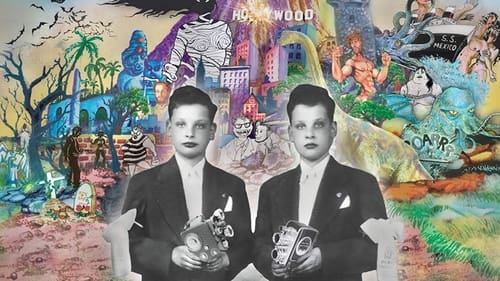
Self (archive footage)
It Came from Kuchar is the definitive, feature documentary about the legendary, underground filmmaking twins, the Kuchar brothers. George and Mike Kuchar have inspired two generations of filmmakers, actors, musicians, and artists with their zany, "no budget" films and with their uniquely enchanting spirits.

Director
A meditation on the time when the world watched as filmmaker Jonas Mekas' home country of Lithuania fought for independence. An immersion into the addictive grasp of the 24-hour news cycle, into a moment of major social upheaval, and into one very personal fixation of an obsessive chronicler. The film exists in a shortened, four-screen version as well as a one-screen, full-length document.

MM Serra and Jonas Mekas sign a paper in 3D.

Director
Filmed in 1967 (camera: Gideon Bachmann), edited in 2009. I exit Chelsea Hotel and proceed towards Seventh Avenue where I catch a taxi. From 1967 to 1974, Chelsea Hotel, Room 725, was my home. Soundtrack: Leonard sings a song to my neighbor in room 726, Janis Joplin. -Jonas Mekas

Self
Filmmaker Jonas Mekas follows his friend, film director Martin Scorsese, and his cast and crew, through various locations during the shooting of his film The Departed, released in 2006.

Director of Photography
Filmmaker Jonas Mekas follows his friend, film director Martin Scorsese, and his cast and crew, through various locations during the shooting of his film The Departed, released in 2006.

Takes an in-depth look at the lives and times of the people who hung out with Andy Warhol and "worked" at the Silver Factory during the Sixties, making it all click as a new counter-culture arose and began to exert its influence throughout the arts.

In 2008, Andrew Lampert, employed as the film archivist of Anthology Film Archives, endeavored to ask Jonas Mekas, its legendary and charismatic founder, one trivial or profound question a day. This is a selection.

Director
Filmmaker Jonas Mekas follows his friend, film director Martin Scorsese, and his cast and crew, through various locations during the shooting of his film The Departed, released in 2006.

Himself
This exhibition focuses on Jonas Mekas’ 365 Day Project, a succession of films and videos in calendar form. Every day as of January 1st, 2007 and for an entire year, as indicated in the title, a large public (the artist's friends, as well as unknowns) were invited to view a diary of short films of various lengths (from one to twenty minutes) on the Internet. A movie was posted each day, adding to the previously posted pieces, resulting altogether in nearly thirty-eight hours of moving images.

Director
This exhibition focuses on Jonas Mekas’ 365 Day Project, a succession of films and videos in calendar form. Every day as of January 1st, 2007 and for an entire year, as indicated in the title, a large public (the artist's friends, as well as unknowns) were invited to view a diary of short films of various lengths (from one to twenty minutes) on the Internet. A movie was posted each day, adding to the previously posted pieces, resulting altogether in nearly thirty-eight hours of moving images.

Himself
The film documents an encounter at 202 Blvd Saint-Germain, in a cafe underneath Apollinaire's last place of residence. Jean-Jacques Lebel gives Jonas Mekas (who remains off screen), three objects associated with Apollinare: an autographed book, a Futurist manifesto, and one of Apollinaire's last drawings.

Director
The film documents an encounter at 202 Blvd Saint-Germain, in a cafe underneath Apollinaire's last place of residence. Jean-Jacques Lebel gives Jonas Mekas (who remains off screen), three objects associated with Apollinare: an autographed book, a Futurist manifesto, and one of Apollinaire's last drawings.
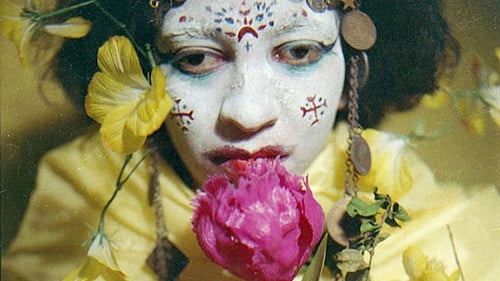
Himself
In this entrancing documentary on performance artist, photographer and underground filmmaker Jack Smith, photographs and rare clips of Smith's performances and films punctuate interviews with artists, critics, friends and foes to create an engaging portrait of the artist. Widely known for his banned queer erotica film Flaming Creatures, Smith was an innovator and firebrand who influenced artists such as Andy Warhol and John Waters.

Director
On January 1st of 2007, Mekas began his epic “365” project inspired by the Italian poet Petrarca and his Canzoniere. Releasing one film for every day of the year through his website, Mekas drew upon a vast archive of film and video footage recorded over the past decades, as well as new material from his everyday life. The “365” project painted an intimate portrait of Mekas’ life, friends and travels, in the poignant diaristic style which he has come to embody. The project attracted a strong international following and prompted many filmmakers around the world to begin their own “365” film and video projects. March 16, 2007: ”I take Helsinki-Tampere train. Not much snow. At the opening of Tampere Film Festival.” – Jonas Mekas

Director
During the course of a single winter’s day, January 16, 1966, Jonas Mekas captured impressionistic glimpses of people playing and working in Central Park and around the city on 16mm film. The kaleidoscope of skaters, strollers, vendors, and animals creates a multitude of patterns, while on the soundtrack Mekas comments candidly on the nature of cinema.

Himself (voice)
During the course of a single winter’s day, January 16, 1966, Jonas Mekas captured impressionistic glimpses of people playing and working in Central Park and around the city on 16mm film. The kaleidoscope of skaters, strollers, vendors, and animals creates a multitude of patterns, while on the soundtrack Mekas comments candidly on the nature of cinema.

Director
This was filmed on January 24, 1964, during Prof. Oster’s demonstration of moiré patterns. He is shown with Salvador Dalí.

Cinematography
Filmmaker Jonas Mekas follows the surrealist artist around the streets of New York documenting staged public art events.

Himself
Filmmaker Jonas Mekas follows the surrealist artist around the streets of New York documenting staged public art events.

Writer
Filmmaker Jonas Mekas follows the surrealist artist around the streets of New York documenting staged public art events.

Director
Filmmaker Jonas Mekas follows the surrealist artist around the streets of New York documenting staged public art events.

Director
...they slept outside in the Vermont night...

Director
This was filmed July 1-4, 1965 in Millbrook, at the estate of Timothy Leary. It is with Baba Ramdass and house guests.

Director
Matsuo Basho's haiku are internationally revered for their clarity, brevity and insight. Learn about this great haiku poet.

Director
In late 1966 I visited Stan Brakhage in Rollinsville, Colorado. This is a portrait of Stan at home, with his family, his animals, and the surroundings, 9000 feet high.

Director
This is a mini-portrait of one of the legendary figures of the 60s who should be credited for the discovery of the Velvet Underground, for saving Bob Dylan's mind after the motorcycle crash, for her pioneering sound/image installations, for keeping the New York Sixties' art community together, for one of the key works of erotic cinema Christmas on Earth, and etc. and etc.

Director
Forty years ago, the couple staged an act of nonviolent protest in support of peace

Himself
Elio Gelmini interviews Avantgarde filmmaker Kenneth Anger. With archive footage of Angers films, he portrays the filmmaker from his childhood until present day.

Director
This was originally an art installation by Jonas Mekas which was later shown as a short film.

Himself
A look at avant-garde filmmaker Marie Menken.

Himself
Metropolitan Museum of Art curator Henry Geldzahler reflects on the 1960s pop art scene in New York.

Provides a rare glimpse into the world of George and Mike Kuchar, underground filmmaking brothers from the Bronx. Get to know the Kuchars, casually hanging out with John Waters at a party, looking at old yearbook photos with their high school classmate Gerard Malanga. Sit in on an extensive interview with the brothers at Anthology Film Archives.

Editor
A casual, personal portrait of Hermann Nitsch, made with footage I took over the many years of our friendship. Footage includes early performances in New York, images of Hermann shortly after the acquisition of the Prinzendorf monastery, which since has become his main space of activity. You also see Hermann with his Vienna, New York, and Napoli friends, Peter Kubelka, Raimund Abraham, Gunther Brus, George Maciunas, Giuseppe Morra, and others.

Director
A casual, personal portrait of Hermann Nitsch, made with footage I took over the many years of our friendship. Footage includes early performances in New York, images of Hermann shortly after the acquisition of the Prinzendorf monastery, which since has become his main space of activity. You also see Hermann with his Vienna, New York, and Napoli friends, Peter Kubelka, Raimund Abraham, Gunther Brus, George Maciunas, Giuseppe Morra, and others.

Co-director Robert Margolis stars as Robert, an actor who may or may not be himself in this intense and often hilarious film about acting, aging and the dark side of ambition. Blurring the line between fact and fiction, The Definition of Insanity was filmed over the course of 18 months, as a documentary crew follows Robert Margolis obsessively from one failed audition to another, recording in raw detail his every humiliation and small triumph as he searches for that elusive perfect role that will catapult his career into the next level. Just when it seems that he will be forced by family and financial pressures to give up everything he has worked for, he meets legendary filmmaker Peter Bogdanovich («The Last Picture Show», «Papermoon»). That encounter changes his life profoundly, but in a very different way than he had anticipated.

Himself
The film icon/Andy Warhol darling is interviewed is his legendary cluttered apartment.

Director
Four-part video made in 2003 and 2004. The first two parts were presented at the Venice Biennale of 2003 as part of the Utopia Station project. An open-ended video -- more parts may be added to it in the future -- my thoughts on the idea of utopia. My thoughts on it change as time goes, as I am trying to figure it out for myself, the meaning of it, the practice of it, the possibility of it, in the past, today and in the future.

Mekas
In February 2004, after 30 years of my life in SoHo, I made a decision to leave SoHo and move to Greenpoint, Brooklyn. This video is about what it feels like to leave a place in which one has spent more time than any other place, and which was also the place of my family life. I am somewhere else now. It’s about beginning of growing roots in a new place, new home, with new friends, new thoughts, experiences. This video is also about video. When in 1949 I began filming with my Bolex, it took me fifteen years to really master it so that my Bolex would do for me what I wanted. When in 1987 I got my first Sony camera I thought it would be different. But no. Only today, after working with the video camera for fifteen years, I feel like it had become an extension of my eye, my body, "A Letter from Greenpoint" being my first real video work.

Creator
In February 2004, after 30 years of my life in SoHo, I made a decision to leave SoHo and move to Greenpoint, Brooklyn. This video is about what it feels like to leave a place in which one has spent more time than any other place, and which was also the place of my family life. I am somewhere else now. It’s about beginning of growing roots in a new place, new home, with new friends, new thoughts, experiences. This video is also about video. When in 1949 I began filming with my Bolex, it took me fifteen years to really master it so that my Bolex would do for me what I wanted. When in 1987 I got my first Sony camera I thought it would be different. But no. Only today, after working with the video camera for fifteen years, I feel like it had become an extension of my eye, my body, "A Letter from Greenpoint" being my first real video work.

Writer
In February 2004, after 30 years of my life in SoHo, I made a decision to leave SoHo and move to Greenpoint, Brooklyn. This video is about what it feels like to leave a place in which one has spent more time than any other place, and which was also the place of my family life. I am somewhere else now. It’s about beginning of growing roots in a new place, new home, with new friends, new thoughts, experiences. This video is also about video. When in 1949 I began filming with my Bolex, it took me fifteen years to really master it so that my Bolex would do for me what I wanted. When in 1987 I got my first Sony camera I thought it would be different. But no. Only today, after working with the video camera for fifteen years, I feel like it had become an extension of my eye, my body, "A Letter from Greenpoint" being my first real video work.

Director
In February 2004, after 30 years of my life in SoHo, I made a decision to leave SoHo and move to Greenpoint, Brooklyn. This video is about what it feels like to leave a place in which one has spent more time than any other place, and which was also the place of my family life. I am somewhere else now. It’s about beginning of growing roots in a new place, new home, with new friends, new thoughts, experiences. This video is also about video. When in 1949 I began filming with my Bolex, it took me fifteen years to really master it so that my Bolex would do for me what I wanted. When in 1987 I got my first Sony camera I thought it would be different. But no. Only today, after working with the video camera for fifteen years, I feel like it had become an extension of my eye, my body, "A Letter from Greenpoint" being my first real video work.

himself
Details unknown

Editor
This piece had its world premiere as the opening film of the Hans Richter Tribute at Cinema Arsenal in the summer of 2003. The nine minutes of film are a compilation of all appearances of Hans Richter in Jonas’s films. The result is a new work, a singular contemporary document, which does not only capture Hans Richter, but shows him embedded in his environment.

Director
This piece had its world premiere as the opening film of the Hans Richter Tribute at Cinema Arsenal in the summer of 2003. The nine minutes of film are a compilation of all appearances of Hans Richter in Jonas’s films. The result is a new work, a singular contemporary document, which does not only capture Hans Richter, but shows him embedded in his environment.

Evoking the physiognomy of a Rembrandt portrait, Axiom of Choice depicts Jonas Mekas and his son Sebastian, their heads rotating in radiant chiaroscuro against a black ground. With Mekas at its center, the references to cinematic machinery abound in this work: from the proto-filmic zoetrope (which used a spinning cylinder to create the illusion of a moving image), to the flickering zoom of Ernie Gehr’s film Serene Velocity, to the enormous gyrating machine at the center of Michael Snow’s La Région Centrale. —Richard Birkett, Karin Schneider & Nicolás Guagnini

Director
Shot in 1950 upon arriving in America, Mekas did not edit and present the footage until 2003 making this both his first and last film shot on 16mm.

Director
A document of a Living Theater performance in Cassis, France, this piece was filmed in 1966 but only edited and released in 2002, with a newly commissioned score by Philip Glass

Himself
A short portrait of Jonas Mekas on the occasion of his 2002 retrospective in Paris (for his 80th birthday). Through film clips and interviews, Mekas recounts his arrival in America, his early life in New York and his first filmmaking experiences. An introduction to his life and work.
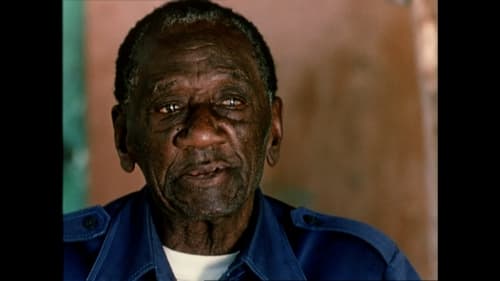
Himself
Documentary about the life of avant-garde filmmaker Maya Deren, who led the independent film movement of the 1940s.

Director
Bits of Fluxus events and performances, and picnics with friends

Director
The title comes from a poem of a German poet, Heine. The 9/11 event was so beyond my comprehension – you can understand and react to a death of one, or two persons‚ but I could not react to the death of 2500 people – it was an abstraction, a fairy tale – that’s why I framed my 9/11 film (shot from my roof) with the fairytale, with the image watching this story, the story of 9/11. Like any other fairy tale coming from the past – by this girl this child dreaming, listening, and dreaming about the tales coming from the past. ―Jonas Mekas

I made this video June 23, 2001, as a letter for my good friend Penny Arcade who some days earlier had asked me why I love New York. I truly love New York! This letter to Penny Arcade is my love letter to New York.

Director
I made this video June 23, 2001, as a letter for my good friend Penny Arcade who some days earlier had asked me why I love New York. I truly love New York! This letter to Penny Arcade is my love letter to New York.

Director
In 1971, Jonas Mekas was permitted by the Soviet authorities to visit his mother in Lithuania whom he had not seen for 27 years. On his return trip, he went to Vienna for the first time. He kept the footage he shot during this visit and waited 30 years for the right time to release it.

Director
This is footage of Elvis Presley's last performance in New York on June 9th, 1972. It is preceded by footage I shot in Vienna a few years earlier. It is a unique recording whichever way you look at it.

Editor
A compilation of over 30 years of private home movie footage shot by Lithuanian-American avant-garde director Jonas Mekas, assembled by Mekas "purely by chance", without concern for chronological order.

Cinematography
A compilation of over 30 years of private home movie footage shot by Lithuanian-American avant-garde director Jonas Mekas, assembled by Mekas "purely by chance", without concern for chronological order.

Writer
A compilation of over 30 years of private home movie footage shot by Lithuanian-American avant-garde director Jonas Mekas, assembled by Mekas "purely by chance", without concern for chronological order.

Director
A compilation of over 30 years of private home movie footage shot by Lithuanian-American avant-garde director Jonas Mekas, assembled by Mekas "purely by chance", without concern for chronological order.

Self / Narrator
A compilation of over 30 years of private home movie footage shot by Lithuanian-American avant-garde director Jonas Mekas, assembled by Mekas "purely by chance", without concern for chronological order.

Himself
A short lecture by Jonas Mekas

Director
A short lecture by Jonas Mekas

Director
Summary of the first fifty years Jonas Mekas spent in New York.

Cinematography
"Made for a billboard project in Luxembourg, a project that never became reality, this video is an exercise in silence and sound." - Jonas Mekas

Director
"Made for a billboard project in Luxembourg, a project that never became reality, this video is an exercise in silence and sound." - Jonas Mekas

Director
The video traces the history of the Factory, describes the activities that took place in it, and the historical context. Actual locations are shown and discussed

Producer
Unpredictably, as most of my life’s key events have been, for a period of several years of late sixties and early seventies, I had the fortune to spend some time, mostly during the summers, with Jackie Kennedy’s and her sister Lee Radziwill’s families and children. Cinema was an integral, inseparable, as a matter of fact, a key part of our friendship. The time was still very close to the untimely, tragic death of John F. Kennedy. Jackie wanted to give something to her children to do, to help to ease the transition, life without a father. One of her thoughts was that a movie camera would be fun for children. Peter Beard, who was at that time tutoring John Jr. and Caroline in art history, suggested to Jackie that I was the man to introduce the children to cinema. Jackie said yes. And that’s how it all began

Editor
Unpredictably, as most of my life’s key events have been, for a period of several years of late sixties and early seventies, I had the fortune to spend some time, mostly during the summers, with Jackie Kennedy’s and her sister Lee Radziwill’s families and children. Cinema was an integral, inseparable, as a matter of fact, a key part of our friendship. The time was still very close to the untimely, tragic death of John F. Kennedy. Jackie wanted to give something to her children to do, to help to ease the transition, life without a father. One of her thoughts was that a movie camera would be fun for children. Peter Beard, who was at that time tutoring John Jr. and Caroline in art history, suggested to Jackie that I was the man to introduce the children to cinema. Jackie said yes. And that’s how it all began

Writer
Unpredictably, as most of my life’s key events have been, for a period of several years of late sixties and early seventies, I had the fortune to spend some time, mostly during the summers, with Jackie Kennedy’s and her sister Lee Radziwill’s families and children. Cinema was an integral, inseparable, as a matter of fact, a key part of our friendship. The time was still very close to the untimely, tragic death of John F. Kennedy. Jackie wanted to give something to her children to do, to help to ease the transition, life without a father. One of her thoughts was that a movie camera would be fun for children. Peter Beard, who was at that time tutoring John Jr. and Caroline in art history, suggested to Jackie that I was the man to introduce the children to cinema. Jackie said yes. And that’s how it all began

Director
Unpredictably, as most of my life’s key events have been, for a period of several years of late sixties and early seventies, I had the fortune to spend some time, mostly during the summers, with Jackie Kennedy’s and her sister Lee Radziwill’s families and children. Cinema was an integral, inseparable, as a matter of fact, a key part of our friendship. The time was still very close to the untimely, tragic death of John F. Kennedy. Jackie wanted to give something to her children to do, to help to ease the transition, life without a father. One of her thoughts was that a movie camera would be fun for children. Peter Beard, who was at that time tutoring John Jr. and Caroline in art history, suggested to Jackie that I was the man to introduce the children to cinema. Jackie said yes. And that’s how it all began

Jonas Mekas' video letter to John Hanhardt, in which he declines an offer for Anthology to be taken on by the Guggenheim, insisting that they must maintain their hard-won independence. Many years ago, Jonas gave a copy to Ed Halter (of Light Industry); we think of it often.

Director
Jonas Mekas' video letter to John Hanhardt, in which he declines an offer for Anthology to be taken on by the Guggenheim, insisting that they must maintain their hard-won independence. Many years ago, Jonas gave a copy to Ed Halter (of Light Industry); we think of it often.

Director
Scenes from the life and work at Anthology Film Archives. Much of the footage in this video was shot by Auguste Varkalis.

Himself
Scenes from the life and work at Anthology Film Archives. Much of the footage in this video was shot by Auguste Varkalis.

Self
Reflections on my 1966 trip to Avignon that helped me to survive a deep crisis I was going through. Texts from my diaries of that period on the soundtrack are read by Angus MacLise.

Writer
Reflections on my 1966 trip to Avignon that helped me to survive a deep crisis I was going through. Texts from my diaries of that period on the soundtrack are read by Angus MacLise.

Director
Reflections on my 1966 trip to Avignon that helped me to survive a deep crisis I was going through. Texts from my diaries of that period on the soundtrack are read by Angus MacLise.

Self
A portrait of Jonas Mekas.

Editor
A collection of intimate thoughts, read aloud, that become the soundtrack of one of Jonas Mekas beautiful film journals.

Writer
A collection of intimate thoughts, read aloud, that become the soundtrack of one of Jonas Mekas beautiful film journals.

Director
A collection of intimate thoughts, read aloud, that become the soundtrack of one of Jonas Mekas beautiful film journals.

Director
On October 9th, 1972 an exhibition of John Lennon/Yoko Ono's art, designed by the Master of the Fluxus movement, George Maciunas, opened at the Syracuse Museum of Art, in New York. On the same day an unusual group of John's and Yoko's friends, including Ringo, Allen Ginsberg, Paul Krasner, and many others, gathered to celebrate John's birthday. This film is a visual and audio record of that event.

Writer
Filmmaker Jonas Mekas films 160 underground film people over four decades.

Cinematography
Filmmaker Jonas Mekas films 160 underground film people over four decades.

Editor
Filmmaker Jonas Mekas films 160 underground film people over four decades.

Director
Filmmaker Jonas Mekas films 160 underground film people over four decades.

Editor
This is a video record of the Buddhist Wake ceremony at Allen Ginsberg's apartment. You see Allen, now asleep forever, in his bed; some of his close friends; and the wrapping up and removal of Allen's body from the apartment. You hear Jonas' description of his last conversation with Allen, three days earlier. You see the final farewell at the Buddhist temple, 118 West 22nd Street, New York City, and some of his close friends: Patti Smith, Gregory Corso, LeRoy Jones-Baraka, Hiro Yamagata, Anne Waldman, and many others.

Cinematography
This is a video record of the Buddhist Wake ceremony at Allen Ginsberg's apartment. You see Allen, now asleep forever, in his bed; some of his close friends; and the wrapping up and removal of Allen's body from the apartment. You hear Jonas' description of his last conversation with Allen, three days earlier. You see the final farewell at the Buddhist temple, 118 West 22nd Street, New York City, and some of his close friends: Patti Smith, Gregory Corso, LeRoy Jones-Baraka, Hiro Yamagata, Anne Waldman, and many others.

Himself
This is a video record of the Buddhist Wake ceremony at Allen Ginsberg's apartment. You see Allen, now asleep forever, in his bed; some of his close friends; and the wrapping up and removal of Allen's body from the apartment. You hear Jonas' description of his last conversation with Allen, three days earlier. You see the final farewell at the Buddhist temple, 118 West 22nd Street, New York City, and some of his close friends: Patti Smith, Gregory Corso, LeRoy Jones-Baraka, Hiro Yamagata, Anne Waldman, and many others.

Director
This is a video record of the Buddhist Wake ceremony at Allen Ginsberg's apartment. You see Allen, now asleep forever, in his bed; some of his close friends; and the wrapping up and removal of Allen's body from the apartment. You hear Jonas' description of his last conversation with Allen, three days earlier. You see the final farewell at the Buddhist temple, 118 West 22nd Street, New York City, and some of his close friends: Patti Smith, Gregory Corso, LeRoy Jones-Baraka, Hiro Yamagata, Anne Waldman, and many others.

Himself
Filmmaker Gyula Gazdag's fascinating documentary follows Hungarian poet, playwright and activist István Eörsi on a trip to the streets of New York to visit his friend and contemporary, the iconic beat poet Allen Ginsberg. Shot just two years before Ginsberg's death, the film follows the two friends as they share poetry and laughs, wandering the streets of the Lower East Manhattan, musing about the past and contemplating the future.

Director
This film has to do with the early years of my daughter Oona, when she was three or four years old

Himself
Jonas, Birgit and Anja are leaving for the Brooklyn Bridge. By taxi, buying beer, drinking in the street, joking, running, dancing on the bridge. It was a very funny afternoon.

Director
This film project was made in 1996 to commemorate the 100th anniversary of the birth of the cinema.

Himself
MICHAEL SNOW UP CLOSE was produced on the occasion of The Michael Snow Project, a major, career-spanning, multi-venue retrospective of the artist. The documentary celebrates the multi-faceted shape of Snow's creative genius, including glimpses of his work in painting, sculpture, film, photo-works, performance, installations, and holography. Discussions with Snow, original documentation of his music and performance work, and excerpts from his avant-garde films, are complemented by interviews with filmmakers Jonas Mekas and Bruce Elder, Snow's dealer Av Isaacs, the architect Eb Zeidler, museum director Pierre Théberge, curator Louise Dompierre, and others. A deliberately conventional documentary about a deliberately unconventional artist.

Himself
The real history of the cinema is the invisible history – history of friends getting together doing the thing the love – for us the cinema is beginning with every new buzz of the projector. With every new buzz of our cameras our hearts jump forwards, my friends! ―Jonas Mekas

Director
The real history of the cinema is the invisible history – history of friends getting together doing the thing the love – for us the cinema is beginning with every new buzz of the projector. With every new buzz of our cameras our hearts jump forwards, my friends! ―Jonas Mekas

Director
Images from two trips to Japan, 1983 and 1991. With music – percussion – by Dalius Naujokaitis. A song, or maybe a duet between images and sound. A sutra, perhaps

Director of Photography
Images from two trips to Japan, 1983 and 1991. With music – percussion – by Dalius Naujokaitis. A song, or maybe a duet between images and sound. A sutra, perhaps

Director
Imperfect 3-Image Films | EUA, 1995, 16 mm, pb-cor, 6' ... MOCAtv Presents 'In Focus' - Jonas Mekas - The Artist's Studio by MOCA 9,101 .

Himself
A look into the many lives of Christa Päffgen, otherwise known as Nico; from cutie German mädchen to the first of the supermodels, to glamorous diva of the Velvet Underground, to cult item, junkie and hag. Many faces for the same woman, whom, you realize, just couldn't bring herself to care enough to live.

Director
Jerome Hill had a little outdoor theater on the shore of the Mediterranean. Usually he brought over some musicians, like the Julliard Quartet. But in 1966 he persuaded the city of Cassis to cosponsor – he sponsored part of it himself – the Living Theatre’s production of “Frankenstein.” A special theater was built outdoors for the performance. Jerome wanted somebody to record the event; I agreed to help him. I filmed “Frankenstein” – a spectacular piece of theatre that to me remains the greatest theatre experience of my life. But the results of my filming were so far from the actual experience that I put the footage away intending to never release it. I don’t think it works as film. However, today, seeing how little documentation there remains from the Sixties’ theater, I have decided to release it. I have to stress, that these are only fragments of the actual 4-hour production, that’s why the title MEMORIES OF FRANKENSTEIN.

Himself
Not a documentary in the strictest sense of the word. Rather, it is a journey through the world of the artist Jonas Mekas - one of the exponents of independent U.S. movies; founder and director of the New York Anthology Film Archive.

Director
An historic event: Peter Kubelka gives a lecture at the Library of Congress.

The life and work of Fluxus artist George Maciunas as seen in clips filmed between 1952 and 1978.

Director
The life and work of Fluxus artist George Maciunas as seen in clips filmed between 1952 and 1978.

Director
A video record of a mental and physical journey through 5,000 years of Egypt at the End of History; an attempt to reconnect with the Source, with Jean Houston acting as Virgil; as Sebastian watches and absorbs it all from the corner of his eye, focusing on the tip of the Great Pyramid. All very personal, and it goes on and on, perhaps of very little meaning to others, but of crucial importance to myself, a record not for Entertainment or Public Exhibition, but something to share with friends, one long evening. Maybe there is a letter to my friends about a very crucial journey back to Ithaca – and a present for Sebastian, something that he’ll rediscover when he’ll be approaching the age when I, Odysseus, began my own travels – this may serve him as a beginner’s map – the Fates will give him better ones.

Himself
A behind-the-scenes look at the man behind the trophy and the poisons that taint an otherwise jubilant jamboree.

Peter Sempel's masterful poetic film tribute to butoh performer Kazuo Ohno.

Editor
In 1950 Jerome Hill went to Zurich with the intention of making a film about Dr. Carl G. Jung. The project was abandoned when Hill decided that Jung was not a good subject. After Hill's death, Jonas Mekas edited the film which focuses on Dr. Jung as a person.

Director
In 1950 Jerome Hill went to Zurich with the intention of making a film about Dr. Carl G. Jung. The project was abandoned when Hill decided that Jung was not a good subject. After Hill's death, Jonas Mekas edited the film which focuses on Dr. Jung as a person.

Quartet Number One (1991) 8 min.

Director
Quartet Number One (1991) 8 min.

Himself
Jonas Mekas recites poems of his, both in English and Lithuanian. Exclusive Mekas interview by the poet Sparrow. The legendary poet-film critic and film diarist waxes philosophical in rare extended setting exhibiting his transcendental poetic humor. Jonas attacks the crass world of TV advertising and sell-out commercial filmmakers. Contributes zen anecdotes and filmmaking advice. Choice clips include Mekas' Film Diaries with deceivingly formalist amateur "home movie" style, but in small bursts of expression in a quick collage. Footage from Jonas' homeland as well as clips of famed pop figures John Lennon, Yoko Ono and Tiny Tim.

Camera Operator
Filmed on Dec. 15, 1990. On a rainy day, I have a walk through the early Soho. I begin my walk on 80 Wooster Street and continue towards the Williamsburg bridge, where, 58 minutes later, still raining, my walk ends. As I walk, occasionally I talk about what I see or I tell some totally unrelated little stories that come to my mind as I walk. This video was my early exercise in the one-shot video form. There are no cuts in this video.

Director
Filmed on Dec. 15, 1990. On a rainy day, I have a walk through the early Soho. I begin my walk on 80 Wooster Street and continue towards the Williamsburg bridge, where, 58 minutes later, still raining, my walk ends. As I walk, occasionally I talk about what I see or I tell some totally unrelated little stories that come to my mind as I walk. This video was my early exercise in the one-shot video form. There are no cuts in this video.

Butterfly Wing
An avant-garde documentary film on English guitarist, composer and improviser Fred Frith.
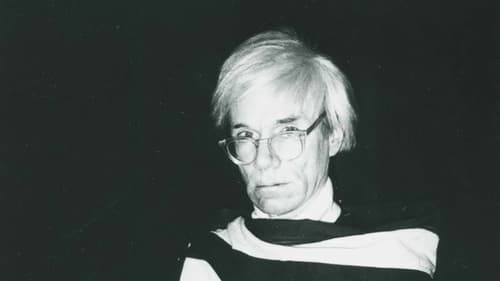
Self
Documentary portrait of Andy Warhol.
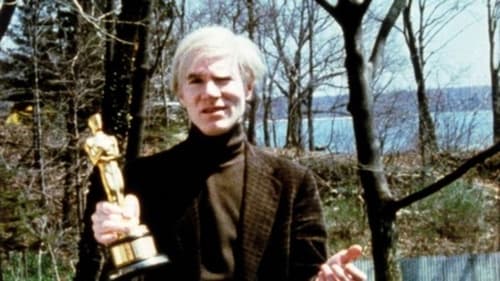
Cinematography
This intimate portrait of Andy Warhol pulls together a unique library of material shot by New York film legend Jonas Mekas. Spanning from 1963 to 1990, the film features a cast of counterculture icons including Allen Ginsberg, George Maciunas, John Lennon, and Yoko Ono, as well as John and Caroline Kennedy, and Lee Radziwill (Jackie Kennedy Onassis's sister and Warhol muse)—to whom Mekas dedicates the film. The film features footage from the Velvet Underground's first public performance. A portrait of the remarkable life of arguable the twentieth century's most famous artist and leading iconographer.

Editor
This intimate portrait of Andy Warhol pulls together a unique library of material shot by New York film legend Jonas Mekas. Spanning from 1963 to 1990, the film features a cast of counterculture icons including Allen Ginsberg, George Maciunas, John Lennon, and Yoko Ono, as well as John and Caroline Kennedy, and Lee Radziwill (Jackie Kennedy Onassis's sister and Warhol muse)—to whom Mekas dedicates the film. The film features footage from the Velvet Underground's first public performance. A portrait of the remarkable life of arguable the twentieth century's most famous artist and leading iconographer.

Director
This intimate portrait of Andy Warhol pulls together a unique library of material shot by New York film legend Jonas Mekas. Spanning from 1963 to 1990, the film features a cast of counterculture icons including Allen Ginsberg, George Maciunas, John Lennon, and Yoko Ono, as well as John and Caroline Kennedy, and Lee Radziwill (Jackie Kennedy Onassis's sister and Warhol muse)—to whom Mekas dedicates the film. The film features footage from the Velvet Underground's first public performance. A portrait of the remarkable life of arguable the twentieth century's most famous artist and leading iconographer.

Director
One hour with a women's drumming group led by Layne Redmond, who has devoted her life to reviving the ancient Mediterranean tradition of women's ceremonial drumming and ritual celebrations. Using one of the world's oldest known instruments, the small hand held frame drum, the Mob of Angels create a contemporary music that pulses with the rhythms of an archaic language.

An experimental short by Beth B. It consists of rapidly intercut close-ups of talking heads reading statements from a Sigmund Freud case history; affidavits attesting to the atrocities of Dr. Josef Mengele, the Nazi war criminal; and journals from the trial of New Yorker Joel Steinberg, accused of killing his adopted daughter.

Himself
Documentary on Andy Warhol's cinema of the sixties, made for Channel 4 in association with The Factory, MOMA and the Whitney Museum of Art and in collaboration with Simon Field.

Himself
Maya Deren is a legend of avant-garde cinema. This authoritative biography of the charismatic filmmaker, poet and anthropologist features excerpts from her pioneering Meshes of the Afternoon and her unfinished documentary on Haiti, interviews with Stan Brakhage and Jonas Mekas, and recordings of her lectures. Narrated by actress Helen Mirren, this definitive documentary offers startling insights into one of the most intriguing, accomplished figures in cinema history.
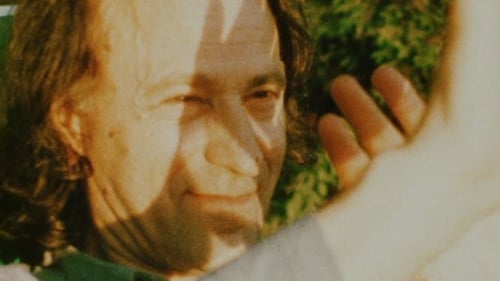
Writer
A film collage tracing the story of the lives, loves, and deaths within the artistic community surrounding Jonas Mekas.

Editor
A film collage tracing the story of the lives, loves, and deaths within the artistic community surrounding Jonas Mekas.

Cinematography
A film collage tracing the story of the lives, loves, and deaths within the artistic community surrounding Jonas Mekas.

Self
A film collage tracing the story of the lives, loves, and deaths within the artistic community surrounding Jonas Mekas.

Director
A film collage tracing the story of the lives, loves, and deaths within the artistic community surrounding Jonas Mekas.

Himself
A short documentary profile of the Anthology Film Archives, shot on the eve of the move to the historic 2nd Avenue Courthouse. Staff and patrons are interviewed, and films preserved by Anthology are spotlighted.

Director
"STREET SONGS is a 1966 performance, in France, of a section of the Living Theater's 'Mysteries and Smaller Pieces.' Based on a chance-determined scenario written by Jackson Maclow in 1961, STREET SONGS weaves militant political chants into a mandala of mantras. Julian Becvk sits cross legged on an empty stage; the slogan he repeats - 'Free All Men! Ban the Bomb! Stop the War! Free the Blacks! Change the World!' - are both meditation and calls to action, as a crowd of voices answers each slogan and actors join him on stage to pace in a circle, clasp one another's shoulders and collectively breath 'Ohmm...' ..." -- Sally Banes, Village Voice, October 18, 1983

Director
Made 1965 / 1983 With Kenneth King and Phoebe Neville. "Kenneth King's CUP/SAUCER/TWO DANCERS/RADIO (1964) is an essay in Pop Art style, in which all the elements listed in the title have equal emphasis. Phoebe Neville, dressed in bra, girdle, curlers, and toe shoes, marches across the floor on pointe with a radio clasped to her ear. King, dressed in undershirt and shorts and a black tie, does calisthenics. Both spill colored solutions from the coffee cup all over themselves, embrace one another emotionlessly, and mechanically caress their own bodies, while rock and roll songs comment ironically on the action and a taped voice explains the dance's structure. Mekas, recording a 1965 performance of this key postmodern dance, has translated it into an extraordinary film ..." -- Sally Banes, Village Voice, Oct. 18, 1983.

Director
In 1963, a magazine called Show commissioned me to make a promotion film for them. I conceived the film as a film periodical devoted to the arts. I filmed Erick Hawkins and Lucia Dlugoszewksi for the film. The Show people looked at the raw cut of the film, decided they hated it, and asked me to turn all the materials over to them. I kept the workprint and some of the outs. That accounts for the generally poor quality of the image. I should add that I consider Lucia Dlugoszewski one of the most important contemporary composers. ― Jonas Mekas

“New York plays itself, as Taylor Mead and Winifred Bryan regale in pas de deux among the trashcans and the towers. The Studiedly Goofy and the Monumentally Grand are joined in masterly pas de don’t [...] The awed couple do battle with the status quo and teach the world to dance on the head of a bin. Rice detects real dignity in Bryan and amazing grace in Mead as they essay solitary promenades through the parks, subways and streets of a wintery New York landscape. Photographed and directed by Ron Rice, edited and scored by Taylor Mead.” –Edward Leffingwell

Director
Drawn together from two decades of itinerant shooting in Europe, Travel Songs evokes Jonas Mekas' improvisatory approach to sightseeing, with Assisi, Moscow and Stockholm all filtered through his singularly animated lens. Five different ‘songs’ or segments: footage from Avila (Spain), Stockholm, Moscow, Assisi, Italy.

Adaptation of an avant-garde play about Rhoda, a hysterical heroine who feels oppressed by the people around her. She suffers through her birthday party, goes to see a doctor, plans a vacation, argues a lot and even breaks the fourth wall.

Director
Sightseeing Stockholm offbeat through the lens of Jonas Mekas.

Harry Smith’s final film; an epic four-screen projection. Smith worked on this cinematic transformation of Kurt Weill and Bertolt Brecht’s opera Rise and Fall of the City of Mahagonny (1929) for over ten years and considered it his magnum opus. The film was shot from 1970 to 1972 and edited for the next eight years. The “program” of the film is meticulous, with a complex structure and order. The Weill opera is transformed into a numerological and symbolic system. Images in the film are divided into categories— portraits, animation, symbols and nature— to form the palindrome P.A.S.A.N.A.S.A.P. The film contains invaluable cameos of important avant-garde figures such as Allen Ginsberg, Patti Smith, and Jonas Mekas, intercut with installation pieces from Robert Mapplethorpe’s studio, New York City landmarks of the era, and Smith’s visionary animation.

Himself
Jonas Mekas reflects on his life.

Director
Jonas Mekas reflects on his life.

Self
In 1977, Robertas Verba followed Jonas Mekas in Lithuania, his second trip there after he left the country in 1944.

Director
My wedding gift to Robert Haller and Amy Greenfield. The publishers of the Anthology Film Archives are very happy with the making this farce.

Self (archive footage)
Explores the complex relationship between the spirit, body, and mind. The film is a nightmare with closed eyes because it counts among the most terrible moments of my life, my second exile, which lasted a very long time. Inspired by an ancient Hindu legend.

Himself
The film is arranged in six chronologically-ordered parts, each filmed in a different location during Oona's third year.

Director
The film is arranged in six chronologically-ordered parts, each filmed in a different location during Oona's third year.
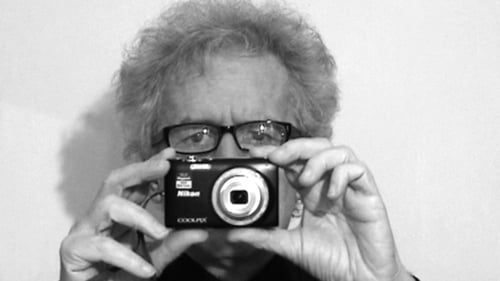
N°1590
Cinématon is a 156-hour long experimental film by French director Gérard Courant. It was the longest film ever released until 2011. Composed over 36 years from 1978 until 2006, it consists of a series of over 2,821 silent vignettes (cinématons), each 3 minutes and 25 seconds long, of various celebrities, artists, journalists and friends of the director, each doing whatever they want for the allotted time. Subjects of the film include directors Barbet Schroeder, Nagisa Oshima, Volker Schlöndorff, Ken Loach, Benjamin Cuq, Youssef Chahine, Wim Wenders, Joseph Losey, Jean-Luc Godard, Samuel Fuller and Terry Gilliam, chess grandmaster Joël Lautier, and actors Roberto Benigni, Stéphane Audran, Julie Delpy and Lesley Chatterley. Gilliam is featured eating a 100-franc note, while Fuller smokes a cigar. Courant's favourite subject was a 7-month-old baby. The film was screened in its then-entirety in Avignon in November 2009 and was screened in Redondo Beach, CA on April 9, 2010.

Cinematography
During the summer of 1966 Jonas Mekas spent two months in Cassis, as a guest of Jerome Hill. Mekas visited him briefly again in 1967, with P. Adams Sitney. The footage of this film comes from those two visits. Later, after Jerome died, Mekas visited his Cassis home in 1974. Footage of that visit constitutes the epilogue of the film. Other people appear in the film, all friends of Jerome.

Self
During the summer of 1966 Jonas Mekas spent two months in Cassis, as a guest of Jerome Hill. Mekas visited him briefly again in 1967, with P. Adams Sitney. The footage of this film comes from those two visits. Later, after Jerome died, Mekas visited his Cassis home in 1974. Footage of that visit constitutes the epilogue of the film. Other people appear in the film, all friends of Jerome.

Director
During the summer of 1966 Jonas Mekas spent two months in Cassis, as a guest of Jerome Hill. Mekas visited him briefly again in 1967, with P. Adams Sitney. The footage of this film comes from those two visits. Later, after Jerome died, Mekas visited his Cassis home in 1974. Footage of that visit constitutes the epilogue of the film. Other people appear in the film, all friends of Jerome.

Director
Footage from 1964-1968 that did not find its way into the Walden reels is joined in this classic period piece. Mostly centered in New York, it also includes travel footage and appearances by David Wise, Salvador Dali, Allen Ginsberg, Jack Smith, Shirley Clarke, Jane Holzer and more. Mel Lyman plays his banjo on the roof.

Self
Jonas Mekas adjusts to a life in exile in New York in his autobiographical film, shot between 1949 and 1963.

Editor
Jonas Mekas adjusts to a life in exile in New York in his autobiographical film, shot between 1949 and 1963.

Cinematography
Jonas Mekas adjusts to a life in exile in New York in his autobiographical film, shot between 1949 and 1963.

Writer
Jonas Mekas adjusts to a life in exile in New York in his autobiographical film, shot between 1949 and 1963.

Director
Jonas Mekas adjusts to a life in exile in New York in his autobiographical film, shot between 1949 and 1963.

After the author’s period of experimentation, these American notes are extremely straightforward. As in Migration, however, this America could be a more remote country, and the inspiration is avowedly Japanese (Basho’s Narrow Road to the Deep North). Implicitly, the film-maker compares himself to an old peddler of drawings, Sam, hawking his wares at the entrance of Columbia’s Butler Library.
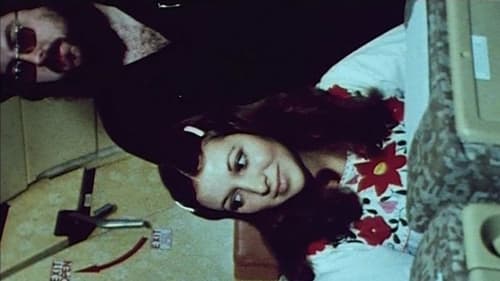
Described (rather cheekily) by director Michael Snow as a musical comedy, this deft probing of sound/image relationships is one of his wittiest, most entertaining and philosophically stimulating films. In his words, the film “derives its form and the nature of its possible effects from its being built from the inside, as it were, with the actual units of such a film, i.e. the frame and the recorded syllable. Thus its ‘dramatic’ element derives not only from a representation of what may involve us generally in life but from considerations of the nature of recorded speech in relation to moving light-images of people.’”
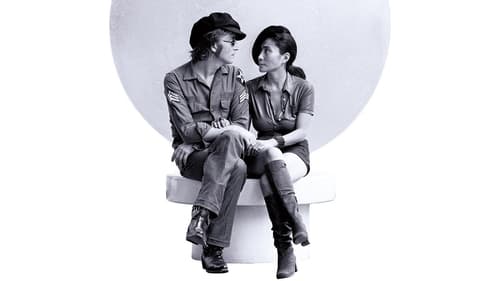
Himself
A surreal, half-fiction, half real life footage of a day in the life of John lennon and Yoko Ono, composed to music from John's historic 'Imagine' album and Yoko's 'Fly'.

Himself
A home movie by Adolfas Mekas and wife Pola Chapelle on their travels to Lithuania and Europe. It was filmed concurrently with the more highly regarded “Reminiscences of a Journey to Lithuania” by Jonas Mekas, brother to Adolfas.
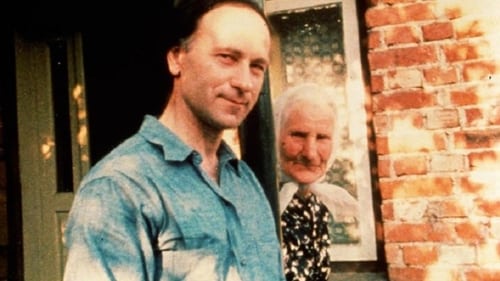
Editor
A 1971–72 documentary film by Jonas Mekas. It revolves around Mekas' trip back to Semeniškiai, the village of his birth.

Writer
A 1971–72 documentary film by Jonas Mekas. It revolves around Mekas' trip back to Semeniškiai, the village of his birth.

Cinematography
A 1971–72 documentary film by Jonas Mekas. It revolves around Mekas' trip back to Semeniškiai, the village of his birth.

Himself
A 1971–72 documentary film by Jonas Mekas. It revolves around Mekas' trip back to Semeniškiai, the village of his birth.

Director
A 1971–72 documentary film by Jonas Mekas. It revolves around Mekas' trip back to Semeniškiai, the village of his birth.

Himself
During the trip back to Lithuania, Jonas Mekas made Reminiscences of a Journey to Lithuania, Adolfas Mekas made Going Home, while Pola Chapelle, Adolfas’ wife, made this Journey to Lithuania, which both Jonas and Adolfas said was the best of these three films.

Director
Images of Moscow filmed in 1971 as part of Mekas's "Travel Songs" series.

International Cast of Actors: Jonas Mekas, from Lithuania, poet and film-maker; Louis Brigante, from Madagascar, poet and publisher; Storm De Hirsch, from Holland, poetess, seer and film-maker; Pola Chapelle, from Tierra del Fuego, singer and motel operator; Adolfas Mekas, from Lapland, basket weaver and film director; Contessa Angela Maria Andrecci di Castiglione, from Italy, opera singer.
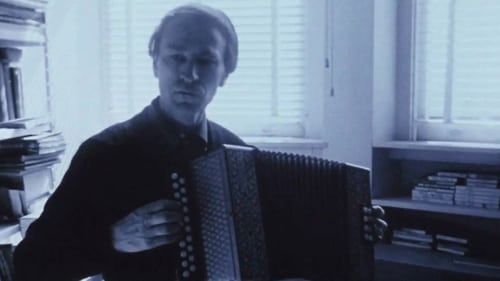
Self
An epic portrait of the New York avant-garde art scene of the 60s.

Cinematography
An epic portrait of the New York avant-garde art scene of the 60s.

Editor
An epic portrait of the New York avant-garde art scene of the 60s.

Writer
An epic portrait of the New York avant-garde art scene of the 60s.

Director
An epic portrait of the New York avant-garde art scene of the 60s.

Himself
Iimura creates a short self-portrait as well as brief portraits of five of his peers: Brakhage, Vanderbeek, Smith, Mekas and Warhol. In each portrait, Iimura attempts to copy the styles and traits of each artist (Vanderbeek's constantly moving camera; Mekas' experiments with film speed; Warhol's use of flashes of white against a black background), while briefly commenting on the images being shown. The film serves effectively as an introduction to the film styles of these artists.

Himself
A rare behind-the-scenes view of the exploding New York “underground” in the late sixities, a turbulent time and place that was to change American culture forever. A German TV crew, led by journalist Gideon Bachmann, explores the epicenter of the sixties revolution in art, music, poetry and film and interviews the main players in the “New American Cinema,” that was born on the streets of New York. Against a backdrop of cultural upheaval in all of the arts and growing political agitation against the Vietnam War, Bachman interviews the most prominent figures in “underground film,” including Jonas Mekas, Shirley Clarke, the Kuchar Brothers and Bruce Connor, and visits the most notorious location in the New York art world of the era - Andy Warhol’s Factory - to conduct an interview with the genius of Pop Art himself.

Himself
A verité portrait of Jonas Mekas making his daily rounds, JONAS shows us the underground impresario attending a peace rally, filming in Central Park, typing up notes at the Village Voice and projecting his latest rushes at the Film-Makers' Cooperative. A true New Yorker, Mekas seems to be everywhere at once, always with a Bolex camera slung over his shoulder. In detailing these routines, director Gideon Bachmann comes away with a striking time capsule of a city bent on art.

Director
Jonas Mekas zoomed in from a completely different angle for his Time & Fortune Vietnam Newsreel. This fake interview with ‘Lapland’s Minister of Foreign Affairs’ brings an outsider’s perspective to bear on the US war, and discusses with ironic perplexity if it might not be possible to kill off the Viet Cong more cheaply. For, whilst white students in the US primarily took issue with the war in South-eastern Asia, African-Americans remained predominantly concerned with their own situation. For them, daily discrimination at home and the Vietnam War were simply two faces of the same racist coin

Director
In 1967, I decided to visit Avila where I had an enlightening experience.

Director
Part of the series of Travel Songs by Jonas Mekas.

Narrator
In 1966 I came up upon a book of Meher Baba, the Indian guru/scientist, in which he said that there are three great holy places in Europe: Avila, Assisi, and Fatima. In 1967, I decided to visit Avila where I had an enlightening experience. This is a filmed record of my visit to Avila, with my voice telling how I felt there and what happened (especially with the little dogs).

Director
In 1966 I came up upon a book of Meher Baba, the Indian guru/scientist, in which he said that there are three great holy places in Europe: Avila, Assisi, and Fatima. In 1967, I decided to visit Avila where I had an enlightening experience. This is a filmed record of my visit to Avila, with my voice telling how I felt there and what happened (especially with the little dogs).

Director
A record of a journey through Italy, filmed in 1967.

Editor
The short film is a montage of sped up clips of The Ringling Brothers Circus in action set to a musical track. The film is separated into four segments, each segment which focuses on different acts within the circus. The later segments often incorporate clips from earlier segments, mostly as background to the featured acts. The speed of the clips match the tempo of the soundtrack music.

Cinematography
The short film is a montage of sped up clips of The Ringling Brothers Circus in action set to a musical track. The film is separated into four segments, each segment which focuses on different acts within the circus. The later segments often incorporate clips from earlier segments, mostly as background to the featured acts. The speed of the clips match the tempo of the soundtrack music.

Director
The short film is a montage of sped up clips of The Ringling Brothers Circus in action set to a musical track. The film is separated into four segments, each segment which focuses on different acts within the circus. The later segments often incorporate clips from earlier segments, mostly as background to the featured acts. The speed of the clips match the tempo of the soundtrack music.

Himself
... with real-life portraits of Jayne Mansfield, Frak O'Hara, Ruth Ford, Ned Rorem, Virgil Thomson, Claes Oldenburg, Roy Lichtenstein, William Burroughs, Andy Warhol, Rudy Gernreich, Jonas Mekas and others.

Director
A short film from Jonas Mekas depicting an afternoon in New York of people joining in singing "Hare Hare"

Director
First shown on January 30, 1967, FOR LIFE AGAINST THE WAR was an open-call, collective statement from American independent filmmakers disparate in style and sensibility but united by their opposition to the Vietnam War. Part of the protest festival Week of the Angry Arts, the epic compilation film incorporated minute-long segments which were sent from many corners of the country, spliced together and projected. The original presentation of the works was more of an open forum with no curation or selection, and in 2000 Anthology Film Archives preserved a print featuring around 40 films from over 60 submissions.
![Screen Test: Jonas Mekas [ST211]](/assets/images/no-backdrop.png)
himself
Screen test for Andy Warhol, 1966

Director
An oblique documentary about the LSD group experiments of Timothy Leary, with off screen commentary of a participant and shots of Leary's house and the surroundings.

Sound Designer
“After seeing Taylor Mead’s diaries I can’t look around myself anymore. There is so much to see! So now I sit with my back to nature, like Gertrude Stein.” – Julian Beck, The Living Theatre, Paris.
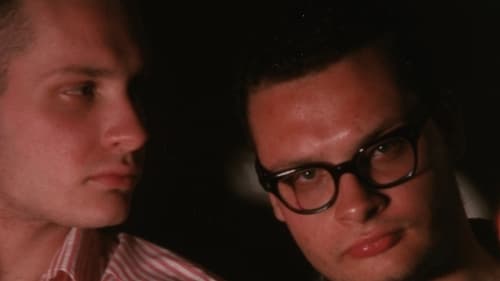
Himself
In March and April of 1966, Markopoulos created this filmic portrait of writers and artists from his New York circle, including Parker Tyler, W. H. Auden, Jasper Johns, Susan Sontag, Storm De Hirsch, Jonas Mekas, Allen Ginsberg, and George and Mike Kuchar, most observed in their homes or studios. Filmed in vibrant color, Galaxie pulses with life. It is a masterpiece of in-camera composition and editing, and stands as a vibrant response to Andy Warhol's contemporary Screen Tests.

Director
Velvet Underground's first public appearance.

Camera Operator
The Velvet Underground's first public appearance, filmed in Super 8 at a Psychiatrist's Convention, at the Delmonico Hotel, New York, January 14, 1966. Andy Warhol was invited to speak at the annual banquet of the New York Society for Clinical Psychiatry. He brought along the Velvets and other factory regulars.

Director
Jonas Mekas visits Stan Brakhage.
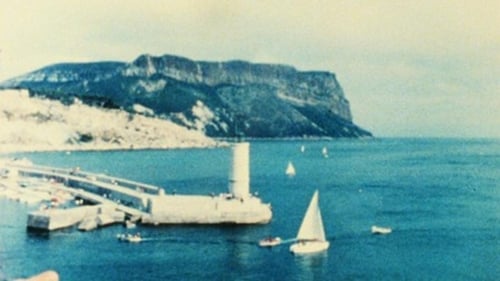
Editor
"I was visiting Jerome Hill. Jerome loved France, especially Provence. He spent all his summers in Cassis. My window overlooked the sea. I sat in my little room, reading or writing, and looked at the sea. I decided to place my Bolex exactly at the angle of light as what Signac saw from his studio which was just behind where I was staying, and film the view from morning till after sunset, frame by frame. One day of the Cassis port filmed in one shot." -JM

Director of Photography
"I was visiting Jerome Hill. Jerome loved France, especially Provence. He spent all his summers in Cassis. My window overlooked the sea. I sat in my little room, reading or writing, and looked at the sea. I decided to place my Bolex exactly at the angle of light as what Signac saw from his studio which was just behind where I was staying, and film the view from morning till after sunset, frame by frame. One day of the Cassis port filmed in one shot." -JM

Lounge Patron
Biker Click procures lovely willing young women for decadent millionaire playboy Kendall Harvey III. Kendall sets his sights on Peggy Johns as his next conquest, but the married and straight-laced Peggy turns down his proposal. However, after her husband's advertising business finds itself in a financial slump, Kendall offers to help out but only if Peggy agrees to be his intimate companion for two days.

Director
"I was visiting Jerome Hill. Jerome loved France, especially Provence. He spent all his summers in Cassis. My window overlooked the sea. I sat in my little room, reading or writing, and looked at the sea. I decided to place my Bolex exactly at the angle of light as what Signac saw from his studio which was just behind where I was staying, and film the view from morning till after sunset, frame by frame. One day of the Cassis port filmed in one shot." -JM

Self
The films were made between 1964 and 1966 at Warhol's Factory studio in New York City. Subjects were captured in stark relief by a strong key light, and filmed by Warhol with his stationary 16mm Bolex camera on silent, black and white, 100-foot rolls of film at 24 frames per second. The resulting two-and-a-half-minute film reels were then screened in 'slow motion' at 16 frames per second.

Two nuns take a bath, then meet a sailor on the Staten Island Ferry.

Himself
A newsreel of Jonas Mekas shooting his filmed version of The Brig on the set of the Living Theatre production.

Editor
In 1964 Film Culture magazine chose Andy Warhol for its annual Independent Film award. The plan was to show some of Andy's films and have Andy come on stage and hand him the award. Andy said, no, he didn't want a public presentation.

Director of Photography
In 1964 Film Culture magazine chose Andy Warhol for its annual Independent Film award. The plan was to show some of Andy's films and have Andy come on stage and hand him the award. Andy said, no, he didn't want a public presentation.

Himself
In 1964 Film Culture magazine chose Andy Warhol for its annual Independent Film award. The plan was to show some of Andy's films and have Andy come on stage and hand him the award. Andy said, no, he didn't want a public presentation.

Director
In 1964 Film Culture magazine chose Andy Warhol for its annual Independent Film award. The plan was to show some of Andy's films and have Andy come on stage and hand him the award. Andy said, no, he didn't want a public presentation.

Cinematography
"In Spring, 1963 Show Magazine called me and asked that I make a film on arts in New York. I told them, why did they want me to make it - didn't they know I was a bit unusual? ... 'We want something unusual,' they said. So I went out and made a newsreel on arts. Show people looked at the rough cut of the film and became very angry. 'But there is nothing about Show Magazine and DuPont fabrics in the movie,' they said. 'What has that to do with the arts in New York!' I said. The battle was short. The film was destroyed. Really, I have no idea what they did with it. This workprint of the first FILM MAGAZINE OF THE ARTS is the only print in existence, as far as I know." -- J.M.

Editor
"In Spring, 1963 Show Magazine called me and asked that I make a film on arts in New York. I told them, why did they want me to make it - didn't they know I was a bit unusual? ... 'We want something unusual,' they said. So I went out and made a newsreel on arts. Show people looked at the rough cut of the film and became very angry. 'But there is nothing about Show Magazine and DuPont fabrics in the movie,' they said. 'What has that to do with the arts in New York!' I said. The battle was short. The film was destroyed. Really, I have no idea what they did with it. This workprint of the first FILM MAGAZINE OF THE ARTS is the only print in existence, as far as I know." -- J.M.

Director
"In Spring, 1963 Show Magazine called me and asked that I make a film on arts in New York. I told them, why did they want me to make it - didn't they know I was a bit unusual? ... 'We want something unusual,' they said. So I went out and made a newsreel on arts. Show people looked at the rough cut of the film and became very angry. 'But there is nothing about Show Magazine and DuPont fabrics in the movie,' they said. 'What has that to do with the arts in New York!' I said. The battle was short. The film was destroyed. Really, I have no idea what they did with it. This workprint of the first FILM MAGAZINE OF THE ARTS is the only print in existence, as far as I know." -- J.M.
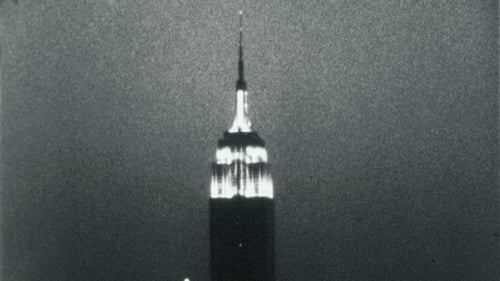
Cinematography
Experimental film consisting of a single static shot of the Empire State Building from early evening until nearly 3 am the next day.

Self (uncredited)
Experimental film consisting of a single static shot of the Empire State Building from early evening until nearly 3 am the next day.

Director
In 1963-64 Salvador Dali did a series of "Happenings" events in a New York. In all cases Peter Beard acted for Dali as both "production manager" and "casting director". The stars of the events in this film are Werushka and Taylor Mead.

In 1963-64 Salvador Dali did a series of "Happenings" events in a New York. In all cases Peter Beard acted for Dali as both "production manager" and "casting director". The stars of the events in this film are Werushka and Taylor Mead.
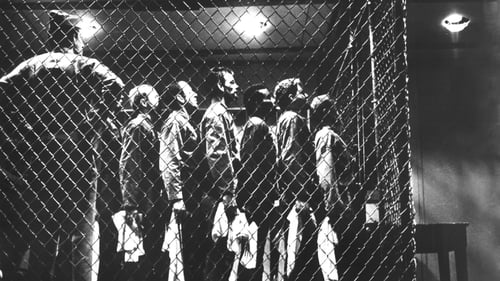
Cinematography
An ultra-realistic depiction of life in a Marine Corps brig (or jail) at a camp in Japan in 1957. Marine prisoners are awakened and put through work details for the course of a single day, submitting in the course of it to extremely harsh and shocking physical and mental degradation and abuse.

Director
An ultra-realistic depiction of life in a Marine Corps brig (or jail) at a camp in Japan in 1957. Marine prisoners are awakened and put through work details for the course of a single day, submitting in the course of it to extremely harsh and shocking physical and mental degradation and abuse.
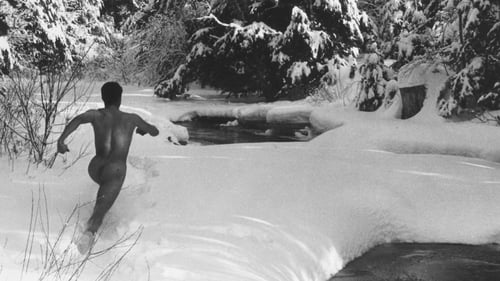
Assistant Director
Jack and Leo vie for the affections of Vera- who appears a little differently to each man- over the course of a series of energetic sketches, flashbacks and homages.

Writer
"Consisting of a poetic stream of razor-sharp images, the overt content of SENSELESS portrays ecstatic travelers going to pot over the fantasies and pleasures of a trip to Mexico... highly effective cutting subtly interweaves the contrapuntal developement of themes of love and hate, peace and violence, beauty and destruction."-- David Brooks.

Diane the Zebra Woman follows four women’s misadventures through the streets of New York City in 1962. All played by Flame Schon, the characters consist of The Detective, The Mother, The Child, and the Medium. Evocative of the scene from which it emerged, the film features cameos from integral figures like William Levy, Jonas Mekas, Paul Morrissey and features an original score composed by Malcolm Goldstein.
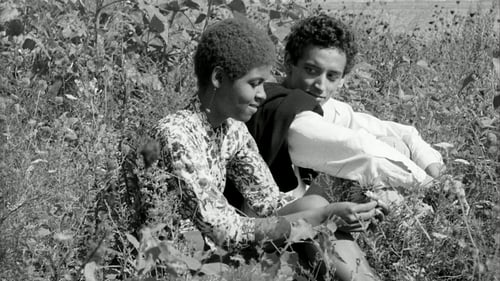
Editor
A depressed woman, Barbara, is on the verge of suicide while a man she meets in a church and a married couple try to convince her that life is worth living.

Cinematography
A depressed woman, Barbara, is on the verge of suicide while a man she meets in a church and a married couple try to convince her that life is worth living.

Writer
A depressed woman, Barbara, is on the verge of suicide while a man she meets in a church and a married couple try to convince her that life is worth living.

Director
A depressed woman, Barbara, is on the verge of suicide while a man she meets in a church and a married couple try to convince her that life is worth living.

Director
Filmed during the shooting of the Sin of Jesus 1960, this film includes Robert Frank, Dick Bellamy, Mary Frank, and others.

Director
In May 1969 John Lennon and Yoko Ono held their famous Bed-In For Peace event. It was attended by many of their close friends, including Timothy Leary. This is a record of the event.

Director
Andy Warhol at the Village Gate, June 7, 1966. Andy videotaping John Kennedy Jr. and Anthony Radziwill at Andy's estate, 1971, in Montauk, Long Island. Andy at work in his studio, 1976, Union Square, New York. Lee Radziwill, Peter Beard, Gerard Malanga, Peter Orlovsky, Ed Sanders, and Ronna Page are also pictured.

Director
Patti Smith improvises a song.

Director
With Allen Ginsberg, Frank O'Hara, Ray Bremser, Le Roi Jones, Peter Orlovsky, this film takes place in the Living Theater, 1958.

Director
Consists of images of the Andy Warhol show at the Whitney Museum in May of 1971. It also includes a George Maciunas dumpling party on 80 Wooster Street, Soho, on June 29, 1971. George Maciunas, Andy Warhol, John Lennon, and Yoko Ono are pictured.

Director
This was filmed on November 1, 1997 at Anthology Film Archives during a tribute to Joseph Beuys. Nam June Paik destroys a piano.

Himself
A tiny part of our homage for the minors master.

Director
Jonas Mekas at Zebulon, a music bar in Williamsburg, Brooklyn, dedicating his 365 day series to Petrarca (1304-1374) the poet who wrote 365 poems to Laura, the woman he loved.

Himself
Presents an intimate view of four decades of the Swiss-born artist Robert Frank who has had an extraordinary influence on contemporary photography and filmmaking. This documentary which examines his life through his films and photographs, includes interviews with many of his collaborators and contemporaries. Written, directed and edited by Philip Brookman, Amy Brookman

Director
Filmed in Berlin, July 1990. Images of workers taking down the wall and street peddlers selling pieces of it to make a living.

Director
Marcel Hanoun wedding by Jonas Mekas
